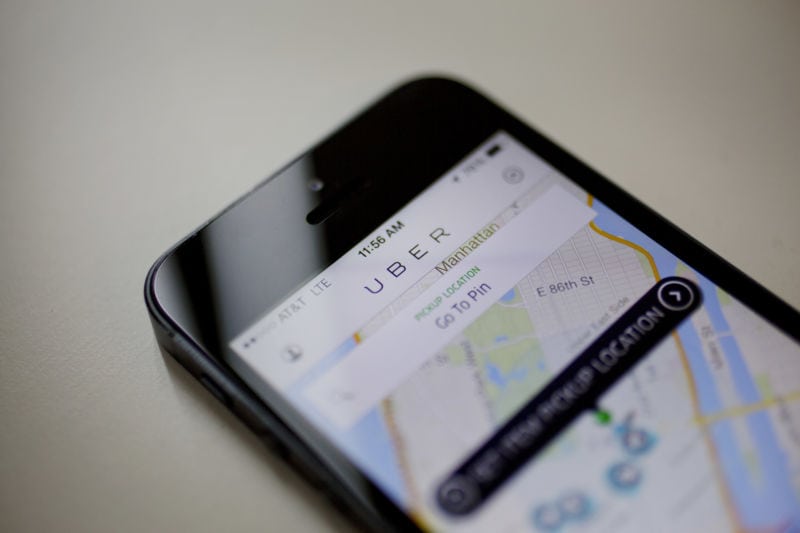
New York City’s largest taxi driver advocacy group is hailing a legal decision by the New York State Unemployment Insurance Appeal Board, which ruled last Friday that three out-of-work Uber drivers can be considered employees for the purpose of unemployment benefits. The decision was first reported Thursday by Politico.
In other words, three men—and possibly other “similarly situated” Uber drivers who had quit over low pay or who were deactivated from the Uber platform—can get paid.
“The decision means that New York Uber drivers can file for unemployment insurance and likely receive it,” Veena Dubal, a labor law professor at the University of California Hastings College of the Law in San Francisco, emailed Ars.
“Uber may appeal the decision to state court, but for now, it’s good law.”
The New York Taxi Workers Alliance, in a statement, called the ruling a “landmark decision,” arguing that it “could also be persuasive in other contexts where the employment status of Uber drivers is in question.”
“This decision gives drivers a safety net, and one that Uber has to pay for, challenging Uber’s business model of low pay and lower retention. Uber treats drivers as if they are expendable, and up until now, it’s never had to come at a risk or cost to the company,” Bhairavi Desai, the group’s executive director, said in the same statement.
“We started off with claims from the drivers gathering dust in some corner under ‘executive review’ to now the drivers being victorious at the highest level of the Department of Labor. It shows that when drivers unite to fight Uber’s business model, we can win.”
Danielle Filson, an Uber spokeswoman, declined to respond to Ars’ specific questions but sent a statement: “We disagree with this ruling and we are reviewing our options. We are confident that the ruling uniquely applies to the three claimants because many of the practices cited in the opinion never applied to one or more of the claimants, are no longer in place, or never existed at all.”
In this particular case, if Uber does appeal, the case would be sent straight to a state-level appeals court. There, judges would not be asked to definitively answer the employee versus contractor question, but rather, figure out whether the Appeal Board itself had adequate evidence to make that determination.
For years, Uber has fought tooth and nail against having its drivers be classified as employees, and not only in the United States—Uber lost a similar case in 2016 in the United Kingdom, and a major case on this exact issue is currently pending before the 9th US Circuit Court of Appeals in San Francisco.
By having significantly fewer employees than it otherwise would, Uber likely saves millions of dollars each year by not paying for drivers’ health, retirement, unemployment, or other benefits that typically come with full-time employment.
The dynamics of Dynamex
The New York case began back in September 2015 when Levon Aleksanian, who had driven for Uber for nearly a year, was suddenly deactivated. Similarly, another driver, Jakir Hossain, who only drove for Uber for less than four months in 2016, was suddenly booted for low driver ratings.
Both men tried to obtain unemployment benefits from the state, but when the case took months to adjudicate rather than the normal weeks, by July 2016, they sued in federal court.
Because New York state authorities did initially determine that they were eligible for such benefits, within just a few months, in July 2017, the federal case was dismissed.
Another driver, Jeffrey Shepherd, also made similar unemployment claims when he quit Uber in July 2016 after making below minimum wage.
These drivers were the three involved in this particular claim for insurance benefits, which Uber resisted.
This case, which only focuses specifically on the issues of unemployment benefits claims, comes just two months after the California Supreme Court ruled in a case known as Dynamex, which makes it harder for companies to unilaterally declare that their workers (or, in Uber’s case, “driver-partners”) are simply contractors.
“Dynamex makes it much more likely that Uber drivers in California will be considered employees for wage purposes, but we do not yet have any decision on the matter,” Dubal emailed Ars. “Together, both decisions (in California and New York) reflect what I think is a turning of the tides—a growing legal recognition that so-called ‘gig workers’ are really employees in disguise.”
In the wake of the Dynamex ruling, the San Francisco City Attorney has now filed subpoenas with Uber and Lyft to force them to prove that they are properly classifying their workers.
John Coté, a spokesman for the San Francisco City Attorney’s Office, told Ars by email that the companies were “not challenging the subpoenas in court and have started providing documents. We are evaluating their responses.”
He added that this process would take “at least” until the end of the month to complete.
The Uber spokeswoman, Danielle Filson, also included a statement saying that “nearly 90 percent of drivers say the main reason they use Uber is because they love being their own boss.”
This figure is based on a survey that Uber commissioned back in 2014.
As Ars has noted previously, upon further inspection, the methodology of this survey does not specifically state that it is a truly random sample of Uber drivers, nor how many Uber drivers exist nationwide. It simply says that 601 interviews were conducted of drivers in various cities around the country.

